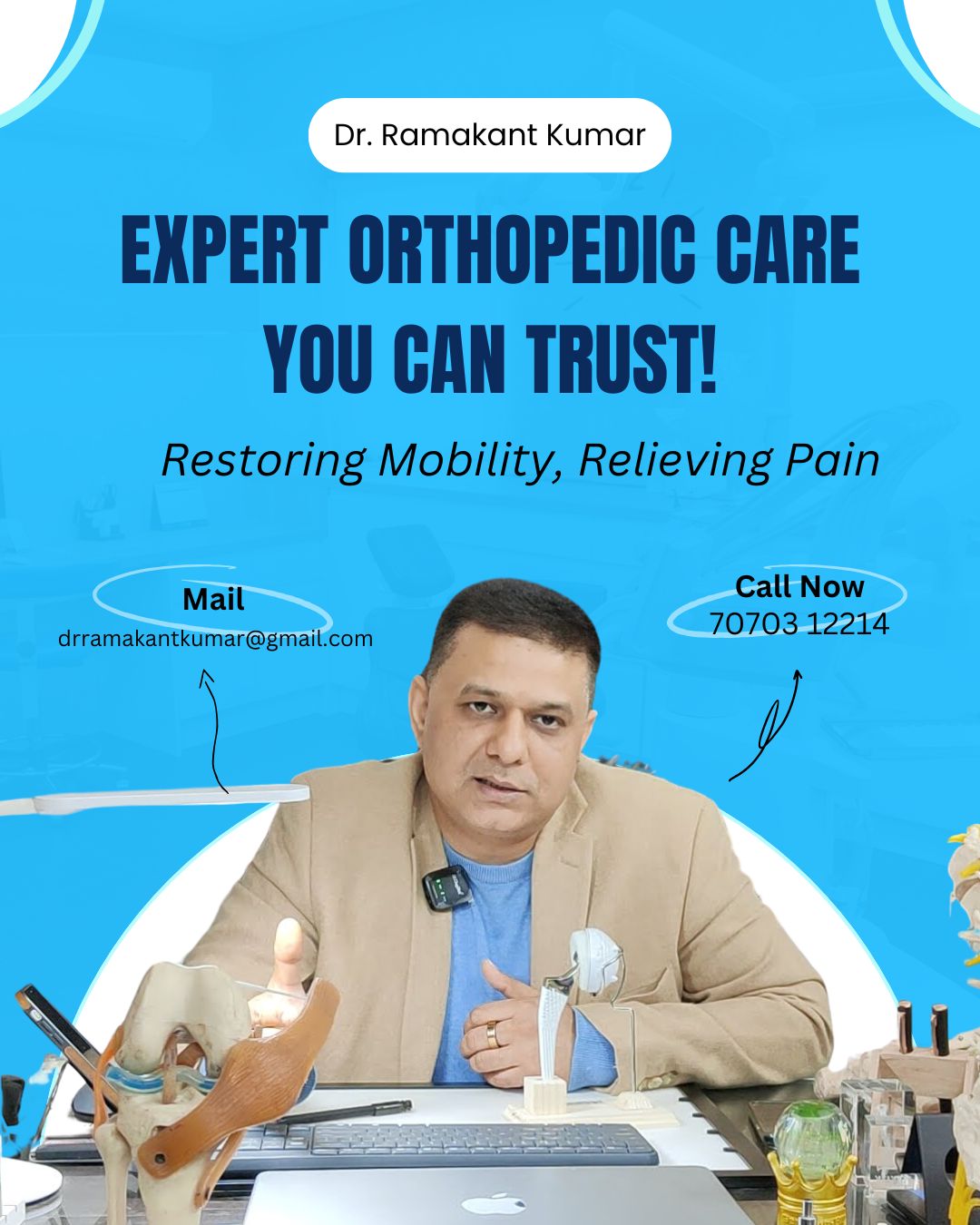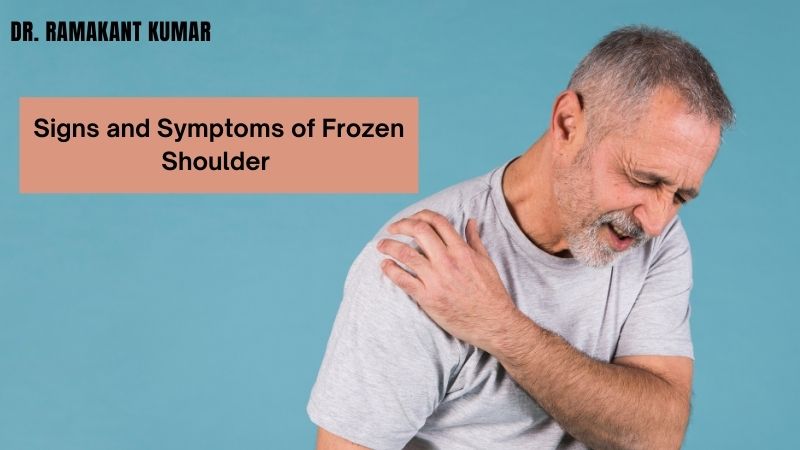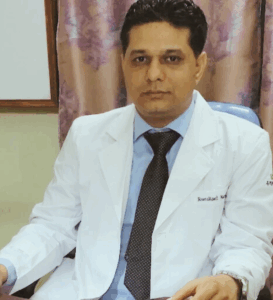Adhesive capsulitis, also known as frozen shoulder, is a condition that causes stiffness and pain in the shoulder joint. Signs and symptoms of frozen shoulder usually appear gradually, worsen over time, and then disappear within one to three years.
After going to many types of research, the true answer for frozen shoulder meaning got right. The capsule in between the shoulder thickens and tightens, making it difficult to move. Scar tissue forms in the joint, and synovial fluid, which keeps the joint lubricated starts to deplete. These things make it even more difficult to move around.
Frozen shoulder rarely reoccurs in the same shoulder, but it can occur in the opposite shoulder in some people. Furthermore, if you live in Patna, Bihar, you should seek the advice of Dr. Ramakant, the best Orthopedic Doctor in Patna.
Contents
Signs and Symptoms of Frozen Shoulder
When talking about what are the first signs of frozen shoulder, the most common symptoms of a frozen shoulder are pain and stiffness, which make movement difficult or impossible.
You will most likely experience a dull or achy pain in one shoulder if you have a frozen shoulder. The shoulder muscles that wrap around the top of your arm may also be in pain. It may be possible that you’re experiencing the same sensation in your upper arm.
Signs and symptoms for Freezing Stage of Frozen shoulder:
- When you move your shoulder, it develops pain (sometimes severe) in the freezing stage.
- It gradually worsens over time and maybe more painful at night.
- This can last anywhere between six to nine months.
- You have a limited range of motion in your shoulder.
Signs and symptoms for Frozen Stage for Frozen Shoulder:
- Your pain may improve, but your stiffness will worsen.
- Moving your shoulder becomes more difficult, making daily activities more tough.
- This stage can last anywhere from 4 to 12 months.
Signs and symptoms for Thawing Stage for Frozen Shoulder:
- Your range of motion gradually returns to normal.
- This could take anywhere between six months to two years.
However, if you are suffering from excess pain and agony, you can go for Dr. Ramakant Kumar, who provides the Best Arthroscopic Shoulder Surgery Patna .
Diagnosis through Frozen Shoulder Test
Your doctor will perform a physical examination to diagnose a frozen shoulder. They’ll examine it to determine how painful it is and how far it moves. They’ll let you move your shoulder on your own during the “active” part of the test. They’ll move it for you and note the differences during the “passive” portion.
A physical test is usually enough to diagnose e frozen shoulder, but your doctor may recommend frozen shoulder tests like X-rays, ultrasounds, or MRIs to rule out other issues like arthritis or a torn rotator cuff, which can cause pain and limit how far your shoulder moves.
Do’s and Don’ts for Frozen Shoulder
A frozen shoulder develops in three stages and can take a long time to recover from. Your doctor will advise you on what to do and what not to do to speed up your recovery and restore your range of motion safely and quickly.
Dos for Temporary Solution to Signs and symptoms of Frozen Shoulder
- Consult your doctor, if you have a regularly affected arm
- Be aware of your posture and sleeping position.
Don’ts for Increasing Signs and Symptoms of Frozen Shoulder
- Do Not Ignore Your Physical Therapy Appointments
- Don’t Engage in Activities That Induce Pain
What is the Best Treatment for Frozen Shoulder?
Until the initial phase of the condition passes, pain killer is usually used. If the problem does not resolve on its own, therapy or surgery can opt to restore motion.
- Hot and cold compression: This aids in the reduction of pain and swelling. This is a temporary remedy to frozen shoulder pain relief at night.
- Pain relievers and anti-inflammatories: Nonsteroidal anti-inflammatory drugs are among them (NSAIDs). Your doctor may prescribe other pain relievers or anti-inflammatory medications. Steroid injections can help with more severe pain and swelling. The shoulder joint gets injected with a corticosteroid, such as cortisone.
- Physical therapy: it is a type of treatment that involves the use of a physical therapist who will teach you stretching and range of some frozen shoulder exercises that requires motion of the joint.
However, these were some of the ways on how to cure frozen shoulder quickly. Other procedures may be looked into if these simple treatments do not relieve pain and shoulder stiffness after a year of trial.
- Shoulder arthroscopy: Your doctor will use a small camera to see inside your joint capsule and cut through the tight areas (capsular release). Small instruments the size of pencils are inserted through small cuts on your shoulder.
Above all, you should always consult your doctor before concluding.
Dr. Ramakant Kumar: One of the Best Arthroscopic Surgeons in Patna, Bihar
Dr Ramakant Kumar, one of the most well-known Ligament Doctor in Patna, can provide you with the best advice and treatment for Arthroscopic Knee Surgery.
He has more than 12 years of medical experience. Above all, he’s an orthopedic and joint replacement specialist who specializes in hip and knee surgeries.
So, we’ve concluded our blog. If you have any questions related to signs and symptoms of frozen shoulder, please leave them in the comments section below.




